Today we live with more pollutants and environmental stressors than ever before and it is negatively impacting our health. So, on this episode of my podcast, my guest, Maggie Berghoff shares 6 environmental stressors and some biohacks to help reduce their impact.
Maggie Berghoff is a nurse practitioner trained in Functional Medicine. She uses a step-by-step framework known as Balance Protocol to transform the lives of men and women. Her approach to health and wellness puts the client at the center of the story to understand the unique biochemical individuality of each person so they can discover long-term solutions to live a vibrant life.
In this podcast interview, Maggie dives into 4 of the 6 environment stressors: air, EMFs, light, and sound – She discusses how these impact your health and shares tips to healthier practices.
So please enjoy this interview…
To learn more about Maggie Berghoff, go to her website here.
For a Complementary 15 min Health Consultation, go here.
TRANSCRIPTION:
Trevor: Hi there. I’m Dr. Trevor Cates. Welcome to The Spa Dr. podcast. Today we live with more environmental pollutants and stressors than ever before, and it is negatively impacting our health. On this episode of my podcast, my guest shares six environmental stressors, and some bio-hacks to help reduce their impact. My guest is Maggie Berghoff. She is a nurse practitioner trained in functional medicine. She uses a step-by-step framework known as Balance Protocol to transform the lives of men and women, and her approach to health and wellness puts the client at the center of the story, to understand the unique and bio-chemical individuality of each person so that they can discover long term solutions to live a vibrant life.
In this podcast interview Maggie dives into four of the six environmental stressors that she talks about. Air, EMFs, light, and sound. She discuses how each of these impact our health, and tips to healthier practices. So please enjoy this interview with Maggie.
Maggie, it’s great to have you on my podcast.
Maggie: Hi. I’m honored. Thank you for having me.
Trevor: Yeah, absolutely. I know that you have a bit of a story that led you to doing what you’re doing, and we’re going to be talking today about six environmental stressors, but I want to hear first your story about what got you interested in this?
Maggie: Yeah. It’s been a long journey. First of all, through my own health and sickness, and auto immune conditions galore, I was seeking something more than a traditional medical model. Now, from that I became trained in functional medicine through The Institute for Functional Medicine, and I hired a mentor to help walk me through the healing sense that I needed, that I was lacking answers to in my own health journey.
It’s through hiring that mentor, and really getting to know my body, and healing the body through an exact framework, that I was open to live my life again. From there, I’ve just adopted that model and that’s now what I teach my clients. It’s called Balance Protocol.
Trevor: Oh, that’s great. You’re a nurse practitioner right?
Maggie: I am. Yup. I am certified as a nurse practitioner, and then I went on to functional medicine. So even as a nurse practitioner, I was having all these symptoms, and I had been healthy my whole life, and then all of a sudden my body was crashing. I was eating foods that I was eating my whole life long, and all of a sudden now they were causing swelling, and bloating, and constipation, and all that good stuff, and I was tired even though I was sleeping endless hours at night, but waking up exhausted through the whole day. Even with that nurse practitioner training, I wasn’t finding answers, and I couldn’t do it myself, and that’s when I reached to find answers, and see what else is out there.
Trevor: Right, I bet that was really discouraging as a nurse practitioner feeling like … You’ve gone through all this training, and you’re supposed to be helping people, and yet you’re struggling with your own health challenges. What was that like?
Maggie: Yeah. I kind of felt like a fraud. Everyone was coming to me trying to better their lives, and their health, and their nutrition, and all that good stuff, but in addition I also felt uncomfortable being in the setting I was, in the hospital setting, because these people who were coming with symptoms very similar to me were just being given a prescription from the guideline I had been giving in school.
So they were giving prescriptions that heal themselves, cover their symptoms, and then we were seeing them back months, and months, even sometimes a year down the road, and I knew in my heart that that patient isn’t going to get better because I knew that I wasn’t going to get better in that way. It was kind of a conflict of interest. I knew I was a nurse practitioner. I knew I had been trained on these medical guidelines, and I knew it, I knew everything down pat, but it wasn’t what the missing link and the answer was for a lot of these people who were coming in with chronic conditions and complaints.
Trevor: Yeah, okay. So this is what led you do realize that there are six environmental stressors that play a big role on health, and people’s recovery. Right?
Maggie: Yeah. Through Balance Protocol, which is the program that I was eventually taken through to heal my own body and auto immune conditions, the first step is environmental. So there’s eight steps to the protocol. The first being environmental, which is a huge important thing that if you do not have your environment in line then everything else … It’s never going to get better. Maybe for a little bit. Maybe you’ll have temporary symptom relief, but not long turn. So before we even adjust like that, before we even adjust hormones, which I had tons of conditions with and many of my clients struggle with as well, first we look at that environment.
So these are actionable things that you can start changing in your life right now before any lab work is done, or before any supplements, or herbals, or anything takes place.
Trevor: Great. So these are sort of the foundation and triggers that are going to lead to people’s problems, and then if you can eliminate these triggers and find other ways, then you can feel better, help address root causes and health challenges, right?
Maggie: Yeah, absolutely. Even people who come to me who aren’t sick per se, or have chronic disease, or auto immune conditions yet, come for this environmental input impact because it’s just upping your game, raising your standards, making sure everything is optimal and in place, to prevent things down the road. Because we live in a world where if you don’t control your air, water, light, sound, EMF, and food, which are those six environmental inputs, you will get sick. You will end up crashing.
Trevor: Okay. So let’s go through these six things.
Maggie: Okay. Sure.
Trevor: We probably won’t have time to really delve into all six, but why don’t you name off the six, and then we’ll pick a few to dive into.
Maggie: Okay. This is going to be fun. So I want to give you just actionable steps to take home right now that you can start working on. So the six environmental factors are air, water, light, sound, EMF, and food. Those six things needs to be optimized. Let’s start at the top. Let’s look at air.
Some simple things you can do in your day-to-day life to improve your air. A lot of the people neglect this but air is crucial to healing and to health. You not only, of course, you breathe it all day long, there’s oxygen, carbon dioxide, there’s a lot more than that, and there’s a lot of junk. So we need to be sure we’re breathing in clean air. Eliminate the fragrances, the toxic fragrances from personal hygiene. You and I, women … I mean, hairspray, gel, and makeup, and lotions, everything. I mean, I was a Sweet Pea, Love Spell lover back in the day, but now I know that those fragrances are actually toxic to our body, and it sends signals to ourselves, and through lungs, and through our body that are negative and cause inflammation and disease.
That’s one thing we can start focusing on. One little thing you can do today is look in your cabinet, and your makeup cabinet, or your hair stuff, or even your cleaning products in your home, and see what has a scent. And flip it over in the ingredient list, and see what that scent is. Now ideally, it should be unscented. We should be breathing in unscented, clean, filtered, purified air. If it has a scent of essential oils, that would be the best next option, but a lot of things with fragrances and perfumes, you want to think about getting rid of at this point.
Trevor: Yeah. Absolutely. I know. I talk a lot about that because of the big focus on skin, and we talk about fragrance as an ingredient, and how it is loaded with a number of chemicals. It’s listed on the label like it’s an ingredient, but it’s actually a group of ingredients. It’s not just an ingredient, and it’s an opportunity for manufacturers to hide a lot of things, including hormone disrupting chemicals.
We talk a lot about topically applied products with fragrance, but what you’re talking about is … even when it’s in the air, you breathe it in and you actually absorb that.
Maggie: Yes. You can think of essential oils, which you should believe in, essential oil benefits, it’s because you’re breathing them in. Right? So essential oils such as lavender, or peppermint can be so powerful that if you breathe it in, it sends yourselves these signal to do something. Relieve that headache, or tension, or whatever it be. Relax your body, decrease your Cortisol. Imagine what the nasty chemicals in perfume toxins are telling your body to do. It’s horrible. Just focusing on breathing in that nice clean natural air, is best, and always through the nose. Not the mouth. It’s very important as well.
Trevor: Why is that?
Maggie: It’s important because the nose, when you breathe it in, there’s many things. First of all, it’s filtering out the microbes and bacteria, rather than in the mouth where we swallow, it goes into our gut, and grows, and creates all sorts of diet disruption. Leaky gut and all that stuff.
So the nose has an extra barrier, which filters that out. Not to mention, breathing through the nose keeps you hydrated. Mouth breathers tend to be dehydrated. They also tend to run on the low-scale of body temperature. So a lot of people, for example, with Hashimoto’s or low thyroid have these cold hands and feet, and their hair is dry and brittle, and their nails are as well. Well, I can bet that they’re probably a mouth breather because that all ties in together. When you’re a nose breather … And you can try it right now if you’re listening to this. Just breathe through your nose a couple of times, you can literally tell, your saliva glands will start to activate and moisten that mouth.
As that happens we become more hydrated, and then also, we swallow that, which keeps circulating the mouth, decreasing bacteria, and keeping our gum health up. And disease starts in the mouth, in that chain. It’s just that all around better idea, as well as the carbon dioxide and oxygen exchange is optimized in that way as well.
Trevor: Okay. That’s air. Also, do you recommend … and I generally recommend air purifiers, and things like that. Do you recommend that as well?
Maggie: Absolutely. Air purifiers. Get your filter changed in your house often. Make sure you’re buying a good quality one. Other things like circulating the air. Not only do we need fresh clean air free of toxins and fragrances, but we need it circulated.
So that looks like opening your windows in the morning for about 10 minutes. Getting new air in, new oxygen in, and the old out, and recirculating. This will help keep us from getting sick, especially in these fall and winter months coming ahead, is circulating that air.
Trevor: Okay. Some mornings in Park City where I live, I’m not sure if I’m going to open my windows, but most days-
Maggie: [crosstalk 00:11:09]?
Trevor: Yeah. Most days I can let in a little bit of air.
Maggie: If you can commit to at least three times a … And I feel you. I’m in Indiana, so we get the cold winters as well. If you can commit to three times a week just for about 10 minutes, and it doesn’t have to be the area you’re in. So maybe you’re upstairs getting ready, and you run downstairs and open the living room windows. Go upstairs, brush your teeth, come back down and close them. At least that’s getting some new air in the house, and we can all raise our standards and get that committed.
Trevor: Yeah, perfect. Love it. Okay. Great. Let’s talk about another one of these environmental stressors, and that’s EMFs. I know that this is somewhat of a controversial topic, especially since it’s something … I mean, you can’t see air but you kind of know it’s there, but EMFs are hard for people to wrap their brains on. Will you tell everybody what that is, and why it’s a health concern?
Maggie: It is. The best way I can explain it is … Just like the essential oil example, you can not see those smells. You can’t, but it is giving your body information. Same with those electromagnetic verses EMS. Even though we can’t see what’s going on, it transmits frequencies onto our body that tells ourselves good or bad information. Typically, in the world we live in today, its bad information. We are having overexposure, just like you can have a good and bad fats, or good and bad sugars, right, you can have good and bad EMF exposures.
The bad EMFs are so high in the world we live in today that, in general, a bad idea to ever surround yourself with them. So I’m talking cellphones, always should be on airplane mode if you are not using them right now. Very, very easy to do. You just swipe it up …
Trevor: All right. I’m going to do that right now while we’re talking.
Maggie: Yes. If you have a iPhone … I see you do. So swipe up on your home screen and there’s a little airplane signal.
Trevor: Doing it.
Maggie: Yup. Airplane mode. So now that your phone is on airplane mode, you do not have EMF signals coming through your phone right there. Especially important for ladies. Wearing them in your pockets, and your purses right next to your uterus. Very, very harmful. Men as well. So that’s a very important thing to remember is that airplane mode. Especially at night. General rule of thumb … I know I’m talking fast, but I want to get a ton of information jampacked. But general rule of thumb, is an arms of the length away from you. So if your phone is not on airplane mode, you’re expecting a call, your daughter is looking to get picked up, whatever it may be, at least keep that phone at least an arm width away so that it’s less detrimental.
There are other things we can do as well to protect ourselves from EMFs, like get a grounding mat. For example, right now I have my feet on a grounding mat because I’m on my computer, which is an EMF source. Laptops are big EMF sources as well, but with that grounding mat we can mitigate that and buffer that, so we get less of an impact. It’s all about controlling how our bodies able to reduce and detox those impacts because it’s inevitable. We’re going to be using phones. We’re going to be using computers, and going out to eat, and going to school even. Our schools are filled with this. So these are some things that you can do to help prevent it, is that airplane mode, the grounding mat. Earthing is best. Earthing and grounding are different.
Grounding is … You can get a mat, like I have, that will help but … It takes away. So it takes away those electrons and atoms, but earthing is when you go outside, and you actually are barefoot on the Earth, in the sand, in the water. So not only does earthing take away those electrons and molecules, but then it adds in the good. So earthing is always the best option if you can, to mitigate all these exposures to EMFs. Get outside at least once a day, barefoot in the ground. It will change your life. It will be amazing.
Trevor: Okay. Great. I think those are great tips that … Can you tell a little bit more about how the grounding mat works.
Maggie: Yeah, so what you do is you plug it into … Make sure it’s not … This is way complex, but not dirty electricity, but a good electrical outlet. You know the little circle part of the electrical outlet. There’s two lines and a little circle. So it comes with an end that plugs in that little circle. What it does is it connects to the grounding wiring, and it connects us to that ground, then the mat has these electrodes in it, which then mitigates that exposure to the EMFs.
Trevor: Okay. Has there been any research done on this? On the grounding mats and some of these other tools?
Maggie: There have and just like anything else, coconut oil for example, there is good, there’s bad, there’s people who strongly believe in it, and people who not so much. But there’s a lot of good scientifically backed information for these grounding mats. Always, always, earthing is best. There’s no doubt about that. Just like taking a supplement for your greens rather than actually eating your green. Actually doing it is the best option, but there is scientific research showing that these do help.
Trevor: This is really interesting about EMFs, and I do know that they’re controversial, and one of the other things though that I’ve heard about EMFs is when you’re sleeping, to be aware of what’s around you, around your bed. That’s another place that I’ve heard is as important because we spend a lot of time in our bedroom and our beds.
Maggie: Absolutely. Absolutely. One thing you can do is make sure your phone is either on airplane mode, or better yet, out of the room. Not only are you decreasing your exposure, but you’re also decreasing the chance you’re going to wake up in the middle of the night, and look at your phone, and start scrolling. Or right when you wake up in the morning, immediately jump on your phone, and scroll, or check your email, which is detrimental in way more ways … and we’ll talk about that later, with the light exposure and stimulating our brain, but phone out of the room is best.
If you need it in the room, airplane mode definitely. Arms width away. Have it out of reach. Another thing we can do is, and I know I’m going to get a lot of haters on this, but fans are actually a source of EMF as well. So if you have a fan above your bed constantly running, that could be a negative source for you too. An easy, easy fix for EMF exposure as well, is to get one of those chord things … You can get them at Lowe’s and put a bunch of chords in it, and you can automate it off or on.
Put your router, and your internet that’s probably downstairs, connect that to that, and have it automatically set off at a certain time. So say that is 8:00 at night every night, all the Wi-Fi goes off. Then you don’t have to think about it. You know it’s off. It’s loving your house in the middle of the night, and you don’t even need it because we know we’re going to need it during the day, most people. So at night when you’re sleeping, let’s just turn it off, and the automated source is the best I have found because it’s one less thing you have to remember to do. So those are always [inaudible 00:18:21].
You can get them at Lowe’s, Walmart, Amazon, wherever. It’s just one of the [inaudible 00:18:28] where it’s kind of like Christmas lights have these two where they automatically turn on or off. Same thing, and you can just plug your source into there.
Trevor: Okay. All right. Cool. That’s a nice little tip. All right. Great. So let’s go ahead and talk about light.
Maggie: Okay. Sure. In each one of these steps, I’m just giving the very tip of the iceberg … There is a lot into this, but light is important in many ways. I’ll talk today about the circadian rhythm. So our circadian rhythm because I know a lot of people coming to me, and a lot of people who I talk to, are having problems with their sleep or having day time sleepiness. So their circadian rhythm is off. This causes weight gain, headaches, fatigue, all this kind of stuff that we are complaining about.
You want your rhythm to be in sync with the sun. Waking up with the sun going to bed with the sun. It’s not always possible for everybody, but we can do things that optimize it. To make it easier and more in sync. So what this looks like in regards to light is when you wake up in the morning, like I said, that phone should not be the first light that you see. It shouldn’t. You should ideally, the sun should be rising, and you should open up your shades, or go downstairs … Better yet, and go outside and get that first light of the sun onto your body. We have clock genes on our skin actually and they can detect this light frequency, and tell our body, “Okay, it’s time to start going. Let’s start this day.”
This is going to increase metabolism. It’s going to set your body up to start digesting, and to really get the day going. Same sense throughout the day. So you’re waking up in the morning, you’re seeing the sun, that’s the first light you see. Throughout the day, at least at times you should try to get out and see that sun again. A lot of people have day time office jobs, which is difficult, but just a few minutes of your day. Hop outside and take a phone call, or hop outside when you go to refill your water bottle, or whatever it is, to get that sun signaling your body, once again telling your clock genes, “It’s still daytime. Let’s keep going.”
Avoid that afternoon slump. Avoid that bloaty feeling and fullness after a meal, and tell your body, “We’re still going.” This is all keeping that circadian rhythm intact. Then as we go through the day in the evening time, as the sun starts to go down, we should ideally be outside in that time as well. All these different times of the day, the sun is sending different signals. Different colors, different hues, different vibration. So at the evening time, in the evening when we get out there and the sun is going down, it’s telling our body, “Oh, it’s time to slow down. Let’s rewind. Let’s get in the mode.” It’s increasing our melatonin to get ready for a restful nights sleep.
After that time, light becomes extremely important. That’s because after the sun goes down, typically that’s when we throw on our bright blue lights in our home, and we turn on the TV, and we scroll through our Instagram, and all this kind of stuff. That’s just an insane amount of blue light penetrating our eyes and ourselves. This is going to mess everything up. So how can we mitigate that? Well first, like I said, airplane mode. Try not to be on your phone as much. If you need to, put it on night shift.
The cell phone, same where you put it on airplane mode. Where you wipe up and click the airplane symbol. There’s a button called night shift, and you can turn it on night shift, and it makes the phone kind of a pink tint. You get totally used to it. This blocks the blue light, and it will help you sleep way better, and keep that rhythm intact. Same thing goes with the computer. There is a download called f dot lux, f.lux, and that will also turn your computer on an amber toned to keep from that blue light. The TV has that as well. You can dim the brightness, even on the night shift mode in the amber tint, always decrease the brightness as well.
That’s how we can optimize our light in regards to sleep and circadian rhythm throughout our day.
Trevor: Okay. Great. What about during the day, the artificial light. In the morning, and during the day, any tips on … I know in a work environment, you don’t always have control over your lighting, but maybe in your home. Any tips on that?
Maggie: Sure. LED lights are out. That’s a no. Natural sunlight is always best. In the evening time, if you need to use blue light, for example, if you’re doing color sensitive work or … I don’t know, if you need to use it or you’re going out to a restaurant, you can even raise your standards even more and buy what’s called blue blocking lights … or it’s glasses. These are glasses that actually block that light for you, and they come in a million different tints.
You can even make your own now, and put them in designer lenses, and it’s a huge business. But there’s things you can do to mitigate that. If you’re in an office setting with blue lights all day long, all I can tell you is you got to be extra, extra careful with everything else involved in your life because if you’re having that exposure all day, you’re going to stay sick. You need to get outside and get that sunshine. Need to be doing things to optimize your body and rebounds your body in other ways, so that your body can handle that blow. It’s all about being able to handle it because we’re not going to go live under a rock, right? We have to be idealistic in this world.
If you know that you have that exposure, then you just need to be sure in other areas that you can control, that you are absolutely controlling it.
Trevor: Okay. I think the glasses are good tip too, because those are becoming more popular and easier to get. So they’re not necessarily super expensive or anything. I think those are some great tips for people. This is just like you said. Living in the modern world, and all the stresses that we’re exposed to in a different way than our bodies are designed. Having these little bio-hacks can be really helpful to help us stay healthy, keep from getting sick, and we’re not just talking about acute illness but chronic illness.
Then another one that you mentioned, I’d love for you to touch on, is sound. Tell us about that one.
Maggie: Yeah. Sound is a really in-depth one. For today, I’ll cover the basics. So kind of going back to that fan when you were sleeping. That’s one exposure of sound that can negatively impact you. So think about when you’re sleeping, you’re supposed to be rested. You’re supposed to be in a dark environment and quiet, and that sound is buzzing, and buzzing, and buzzing. Even if you don’t hear it, like if it’s not a very, very loud one. Even if it’s just that quiet buzz, it’s still telling your brain signals. Right?
So it’s still stimulating, and at night we want to be rested, and calm, and relaxed, and not be thinking about, “What’s that noise? What do I need to do with that?” And working ourselves up. So that’s one exposure. There’s other things throughout the day, such as high-pitched tones and low-pitched tones that you can even buy little tuning forks … And I won’t get into that here, but the main thing for sound that I will touch on is that fan, because that’s an exposure that I feel most people do have. Is that constant running fan at night, and white noise machines. Sleep is so important to all your bodies mechanisms, and with the white noise, with the going to sleep, with music, and the fan, it’s really detrimental to setting our body up for the whole next day, and for healing these diseases.
Trevor: It’s interesting that some people will tell me that they can’t fall asleep without the white noise, or TV, or some sort of … or a fan going. What do you suggest for people that have become so used to using that as a way to help them fall asleep?
Maggie: Yeah, and I definitely get that as well. I suggest working on rebalancing your body in the order. Even with these environmental inputs, like I said, “Each case is individualized.” Each person that walks through my door, we are looking at your whole story, your whole case, your environment, do you have a problem sleeping if you don’t have white noise? Because we’ll adjust that in the right order.
If you optimize your air first, and then you focus on the water. Then you do the light, and then comes sound. By the time we get through sound and optimizing that, you’ve already even optimized your air, water, light. So you may be able to eventually get off of that, and it’s all about rebalancing the body. Once you have more nutrients. Once you have a balanced body, and your hormones are regulating, and your circadian rhythm is getting back to normal, you likely will be able to fall asleep without that white noise.
Trevor: Interesting. Okay. So it could be a signal that something’s out of balance if you’re relying upon that. Maybe there are other ways to help you kind of unwind, and get ready for bed that are going to be healthier in the long run.
Maggie: Absolutely. Yeah. Yeah. Absolutely. Before bed, always make sure that you are resting yourself. That you’re taking a break. Try to be off of the social media. Be off of the computer, the phone, phone calls, busy meetings, whatever it be, at least an hour before bed, like the very minimum. Instead, replace that time with relaxing activities that better you. Such as maybe taking a bath, or spending some time with your loved one, and taking a stroll outside, whatever it be. Getting some fresh air, and replace that with that. That will help actually calm the body down, increase your melatonin, so that you are ready for a restful night of sleep.
Trevor: Great. All right. Well, Maggie, thank you so much for sharing your information today. Please tell everyone where they can find you.
Maggie: Sure. You can find me … My website’s Maggieberghoff.com. That’s Maggie. M-A-G-G-I-E, Berghoff is B-E-R-G-H-O-F-F .com. You can always contact me there. I have a contact button. I respond to emails within 24 to 48 hours. So I’ll get back to you there. I’m also offering for your viewers Dr. Trevor Cates, a complementary 15 minute consultation with myself.
So if you’re feeling like there’s something going on in your life that you are struggling with, such as symptoms like I had, and like maybe of my clients have of constipation, fatigue, and your tired, and you’re trying to lose weight, and you’re swollen, and food intolerances, literally anything, reach out. I’m here to help you. Even if you’re just trying to optimize your life. I’d love to hop on that 15 minute call, and just give you some clarity and recommendations.
Trevor: Okay, well that’s very generous of you. Thank you Maggie. Thank you for your interview today. I appreciate it.
Maggie: Thank you.
Trevor: I hope you enjoyed this interview today with Maggie to learn more about her, and the 15 minute consult that she offered up. You can just go to my website Thespadr.com. Go to the podcast page with her interview, and you’ll find all the information and links there.
While you’re there I invite you to join The Spa Dr. community so you don’t miss any of our upcoming shows. You can also find those shows on iTunes, and download them there as well. If you haven’t done so already, I highly recommend you get your own customize skin profile at Theskinquiz.com. It’s free. It takes just a few moments to answer questions to help you find out what your skin is trying to tell you about your health, and the root causes, what you can do about them, and some tips to help. So just go to Theskinquiz.com.
I also invite you to join me on social media. On Facebook, twitter, Pinterest, Instagram, YouTube, and join the conversation with us, and I’ll see you next time on The Spa Dr. Podcast.
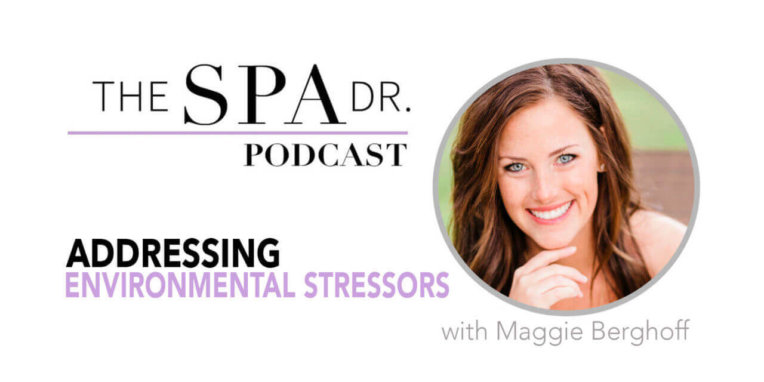
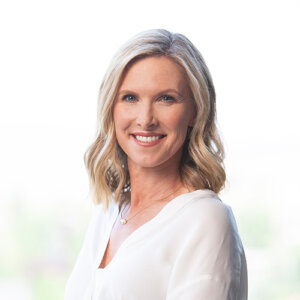
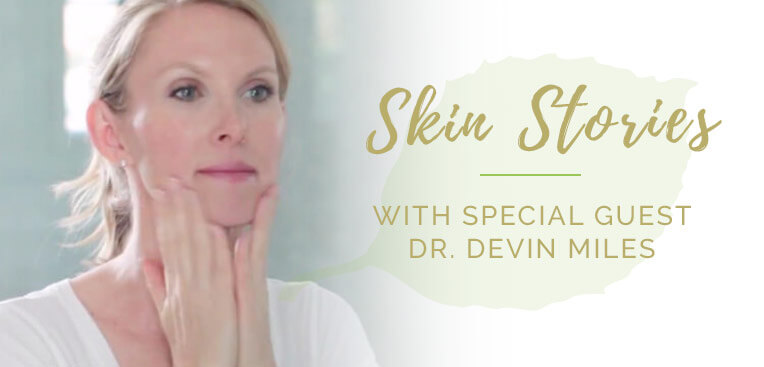
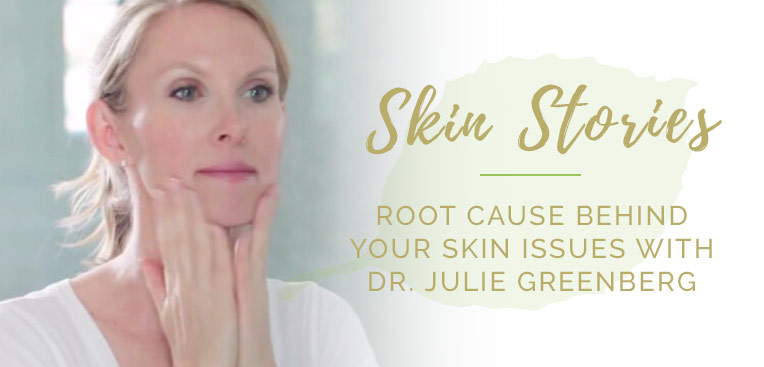
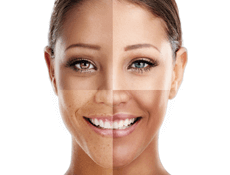
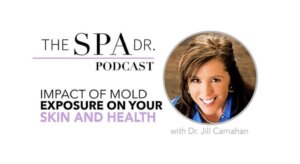
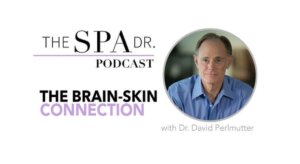
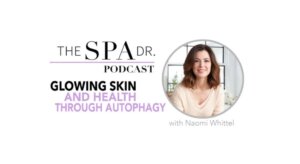
Reader Interactions